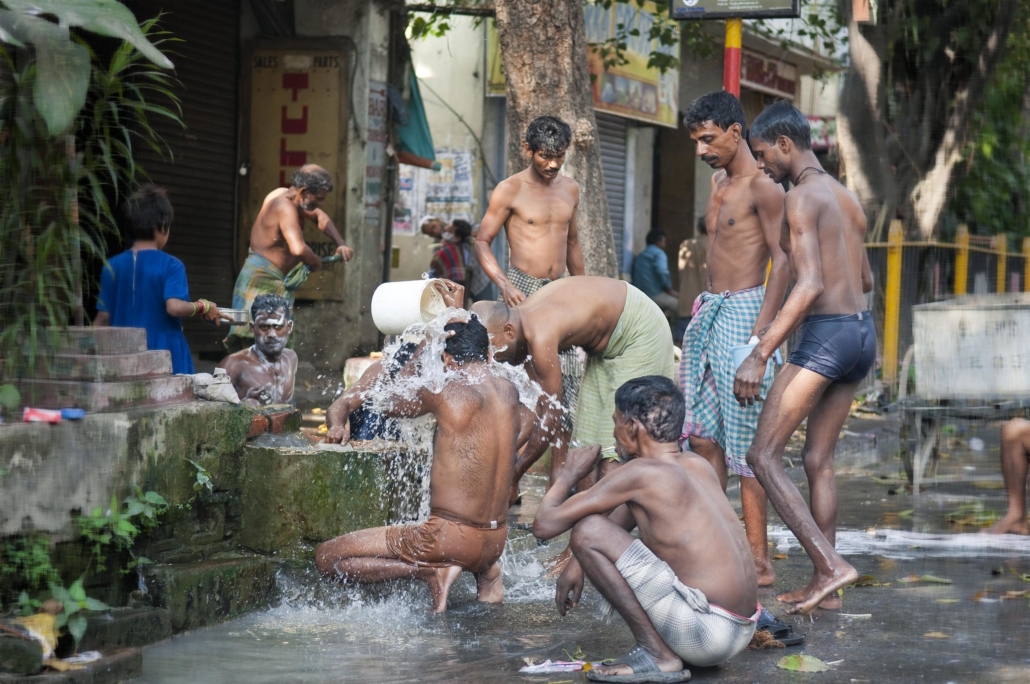Exploring Poverty and Urbanization in India
 India, a land of striking diversity, is in the throes of rapid urbanization, transforming its socio-economic landscape. This South Asian nation, home to more than 1.4 billion people, is witnessing a profound shift from agrarian traditions to urban centers. The catalysts for this change are multifaceted, encompassing factors such as industrialization, economic growth and rural-to-urban migration.
India, a land of striking diversity, is in the throes of rapid urbanization, transforming its socio-economic landscape. This South Asian nation, home to more than 1.4 billion people, is witnessing a profound shift from agrarian traditions to urban centers. The catalysts for this change are multifaceted, encompassing factors such as industrialization, economic growth and rural-to-urban migration.
Urbanization can have a positive impact on reducing poverty and improving the lives of the population of any country. UN India states that India has witnessed remarkable urban advancement, with projections indicating that more than 400 million individuals will reside in its cities by 2030. Despite occupying just 3% of the land, cities significantly contribute to India’s GDP, amounting to 60%. This urban expansion has played a pivotal role in reducing poverty across the country, with approximately 80% of the overall poverty reduction attributed to urban growth. However, the challenges have not ended. Rapid urbanization in India has also shed light on some key issues regarding India’s growth and its fight against poverty. Here are four facts about India’s urbanization.
1. Extreme Weather Patterns Contribute to Urbanization
India’s urbanization is inextricably linked with harsh weather events, presenting a complex dynamic. Extreme weather patterns significantly impact Indian rural areas. Rising temperatures, erratic rainfall and extreme weather events disrupt agriculture, affecting livelihoods and food security. Water scarcity, crop failures and dying livestock compound the vulnerability of rural communities who are left with no option but to migrate to the rapidly urbanizing cities of India to sustain their families. Each year there are approximately 100 million interstate migrants in India.
2. Population Boom in Urban Areas
With the continuous influx of interstate migrants, Indian metros have witnessed an astonishing rise in population over the years. Mumbai experienced significant rural-to-urban migration, hosting a population of 12.5 million, making it India’s most populous metropolis, closely followed by Delhi with 11 million residents. According to the 2011 census, Delhi recorded the world’s fastest urbanization rate, with a 4.1% population increase, while Mumbai’s population grew by 3.1% and Kolkata’s by 2% compared to the 2001 census. For example, by 2015, Delhi had an estimated population of 26 million, Mumbai 24 million and Kolkata 16 million.
3. Urban Poverty
While on one hand India’s rapid urbanization has presented the citizens with grand skyscrapers and been beneficial for many to sustain comfortable, healthy lives, a grim reality persists on the ground level. As cities expand, a significant portion of the population grapples with inadequate housing, lack of basic services and limited access to education and health care. India’s population includes 65.49 million individuals residing in 13.7 million slum households nationwide. Approximately 65% of Indian cities have neighboring slum areas characterized by compact, closely spaced dwellings.
4. Rising Co-morbidities in Urban Areas
India’s urbanization, while propelling economic growth and modernization, has also contributed to a concerning rise in co-morbidities. As urban areas expand, lifestyle changes accompany the shift, with increased consumption of processed foods, sedentary habits and greater exposure to environmental pollutants. These factors have led to a surge in non-communicable diseases such as diabetes, heart disease and respiratory conditions. Urban residents often face higher stress levels, inadequate access to health care and suboptimal living conditions, exacerbating the prevalence of co-morbidities. For example, In urban regions, the prevalence of multimorbidity stands at 9.7%, surpassing the 5.7% rate in rural areas. Among adults aged 40–49 in urban areas, at least one multimorbidity is present in 56–64% of cases, compared to 39–50% in rural settings.
Looking Ahead
Despite the challenges that have come with urbanization, urbanization in India has also shown largely positive outcomes. Between 2005 and 2021, India witnessed a significant reduction in poverty, as 415 million individuals transitioned out of impoverished conditions. The poverty rate decreased from 55.1% in 2005–06 to 16.4% in 2019–21.
However, the implementation of properly planned programs and schemes is essential to combat the individual issues pertaining to unplanned rapid urbanization. For example, the Pradhan Mantri Arogya Yojana (PM-JAY) is an innovative government-funded initiative that launched in India in 2018, offering the largest public health insurance globally. Its primary goal is to make health care accessible and affordable, particularly for low-income individuals. Providing a substantial 500,000 rupee insurance coverage per family, the program strives for a comprehensive approach, delivering a wide range of health services rather than selective ones.
India’s urbanization journey is characterized by burgeoning metropolises like Mumbai, Delhi and Bangalore, juxtaposed with smaller cities and towns experiencing their own growth spurts. This transformation brings both promise and challenges. On one hand, the idea of urbanization fosters economic opportunities, technological advancements and improved living standards, while on the other, it strains infrastructure, exacerbates issues like congestion and poses environmental threats.
As India navigates this intricate urbanization process, addressing these issues becomes imperative. Sustainable urban planning, infrastructure development and inclusive policies are key to harnessing the potential of India’s urban centers. By understanding and effectively managing its urbanization, India can aspire to build cities that offer a high quality of life while preserving its rich cultural heritage and natural resources.
– Piyush Plabon Das
Photo: Flickr
